Ketan Parekh Scam
Share market and stock broking is often considered a very profitable and dynamic money-making strategy, while for others, it is totally a nightmare. It has produced many billionaires like Warren Buffett, Radha Kishan Damani and Rakesh Jhunjunwala and many more.
But on the other hand, the stock market has also produced few scammers and tricksters, who went way beyond the rules and regulations of the share market to become rich. Among such scammers, Ketan Parekh’s name has been among the most sought after scammers, stock market has ever produced. He was convicted in 2008 for his involvement in the indian stock market manipulation scam that happened in the late 1998 to 2001.
History and Background
Ketan Parekh, belonged to a Gujrati stock broker family in Mumbai and was raised in Mumbai itself. After completing his studies, he studied Chartered Accountancy (CA) and joined his family broking business.
But he wanted to learn the in and out of money-making strategies of the share market, and he left his family business to join the most sought after stock broker and big bull Mr. Harshad Mehta, to learn the basics of stock broking. He joined as a trainee in Grow More Consultancy, owned by Mr. Mehta to gain the share market basics. The Mehta and the Parekh duo can be clubbed to name the “Guru chela scammer”, as both became the famous stock broking scammers in India.
After working under Mehta for a few years, he joined his family broking firm named NH Securities. In the year 1992, when the Harshad Mehta scam was exposed, Parekh was the part of the company, he was though not investigated as he was just a junior level employee with no direct connection with the company operations. But in the same year he was held guilty in the Canfina Mutual Fund scam and was sentenced to one year of imprisonment.
The Scam
Ketan Parekh was no less than Harshad Mehta when it came to manipulating the stock market. He is commonly known as the “Bombay Bull” and referred to as” the Pied Piper of Dalal Street”. He followed the “Pump and Dump” scheme to do so.
Unlike Harshad Mehta, he chose to keep his low-key image and portrayed a simple living with a humble profile. His qualification as CA and his family history of brokers, helped him create his own trading ring and later helped him become the bull of the stock market. He then got closer to celebrities and was often in the limelight and media’s eye. He then formed KVP Ventures along with Vinay Maloo and the Australian magnate Kerry Packer. He also formed an investment bank named Triumph International.
Each and every move by Parekh was closely monitored and followed by many brokers, as he was considered to be the “Man with the Midas Touch”. Whatever he did was considered to turn out to be gold. He basically was said to be a believer of the Information, Communication and Entertainment sector i.e., the ICE sector.
This was nothing special that time, given the fact that late 90’s and early 2000’s was the time when the IT boom (dot.com boom) took place and these were the stocks which were actually growing by leaps and bounds worldwide. Hence it always seemed that the stocks he picked were very fundamentally strong and thus grew. It was due to this that the 200% growth of few stocks didn’t receive much attention as the Harshad Mehta stocks had. He formed a network of brokers and identified and targeted 10 handpicked stocks in his portfolio which was also known as the K-10 stocks.
The market always predicted the future of these stocks to be bullish. Those K-10 stocks were namely: Aftek Infosys, DSQ Software, Global Telesystems, Himachal Futuristics Communications, Pentamedia Graphics, Satyam Computers, Silverline Technology, SSI, Zee Telefilms and Pritish Nandi Communications.
He traded in the Kolkata Stock Exchange which happened to be advantageous to him due to the lack of rules and regulations as compared to the Bombay Stock Exchange. He ruled the stock market during the years from 1999 to 2000. He misused the Kolkata Stock Exchange and also tied up with many other brokers to trade on his behalf and gave them the commission.
He would buy 20% to 30% stake in the less known companies with these huge amounts of money and suddenly those companies’ share price would skyrocket and become the talk of the town all of a sudden. Once the price would reach a certain level, he would silently exit and sell the securities and make countless profits from them. This was his Pump and Dump scheme, like for Zee Telefilms, whose share price was Rs. 127 per share rose to Rs. 2330 and similarly for Himachal Futuristics which had a rise from Rs. 194 per share to Rs. 2553 per share.
He also followed the Circular Trading method as well, where he made a few investors or junior traders buy and sell frequently certain shares throughout the day on his call. This caused the “traded volumes” to go up significantly. The investors who based their decisions on the volume traded would consider such stocks to be active and make an investment. Once the prices went up, he would make a profit out of it and also pay the traders a small commission. This trading via primitive traders is popularly known as the Badla system.
He not only manipulated stock prices but also played games with banks in order to get funds. He bought shares of the Madhavpura Mercantile Commercial Bank, to gain the confidence of the bank, to offer him loan in the form of Pay Orders. Pay Order is very much similar to a cheque but it is issued by the bank upon the payment of small advance money from the customer. When he successfully managed to rip-off the price of MMCB’s shares, he approached the other financial institutions including HCFL and UTI and pledged the pay orders with them. His loans accumulated to Rs. 750 million.
He never ever in his wildest dream thought that this MMCB would become the reason for his downfall. He took Rs. 137 Crores Pay Order from the Madhavpura Mercantile Commercial Bank with no advance payment. Later he sent this pay order to the Bank of India for clearance, and received Rs. 137 Crores in his account. He used this money to manipulate the market.
During this time Bear Cartel came to picture and began short positioning against Ketan Parekh’s stocks. It was during this time that the market began to fall and it gave an impression that the market was ready for the showdown between Bear Cartel and Ketan Parekh. Parekh could not use the 137 Crores, which he took from the Bank of India. He was trapped by the planning of the bear cartel and couldn’t even think of exiting from it, fearing he would lose all his 137 crore. So he had to hold on the 137 crores and he started investing through his other stocks to increase the market valuation.
It was during this time that the Bank of India approached the MMCB for its 137 crores, which it offered to Ketan Parekh. Since the Madhavpura bank also didn’t get its payment from Parekh, it defaulted on the payment of Bank of India. However, Ketan Parekh tried to manage the situation and paid 7 Crores, but still 130 crores were pending from his end. He was confident that he would repay the balance amount, after booking profits from the market.
He never thought that this phase would become a nightmare in his life. It was during this time that Sucheta Dalal, who played a major role in exposing the Harshad Mehta scam, published a few articles, hinting about Ketan Parekh’s manipulations and fraudulent activities. But the strategies and tricks of Ketan Parekh did not go far and it came to the notice of the RBI and SEBI wherein, they were quick in sniffing that there was something unusual about the profits he made and the loan he had obtained. RBI, then declared the Madhavpura Mercantile Commercial Bank as defaulter, and froze all assets of Ketan Parekh.
Allegations on Parekh
Post the RBI action on the MMCB, CBI also put an enquiry on him, and arrested him in March 2000 and he was held in custody for more than 53 days. And on March 1, 2000, the share markets crashed by more than 176 points causing the investors to lose more than 2000 crores.
Ketan Parekh declared to be guilty of a criminal offense for ripping off the Indian stock market and was barred from trading in the Bombay Stock Exchange (BSE) for 15 years up to 2017. He was also found to be involved in a Circular Trading with many banks and Insider Trading for which he was sentenced to rigorous imprisonment of one year.
However, SEBI investigated and found that despite being prohibited from trading, he used his network well and made certain companies trade on his behalf. Later in 2008, many such companies were traced by SEBI and were barred from trading too. The CBI special court sentenced him 2 years jail and in 2018 another special court found Ketan Parekh and his relative Kartik Parekh guilty of not paying the penalty imposed by SEBI and sentenced them to 3 years of imprisonment along with a fine of Rs. 5 Lakh each. However, Kartik was allowed to appeal against the sentence. There were two other accused in this matter, Navin Chandra Parekh and Kirti Kumar Parekh, who were later found innocent and were acquitted by the court.
This Ketan Parekh scam, became the largest stock market fraud in the history of Indian stock markets with a scam worth Rs. 40,000 crores. Sucheta Dalal, published a book named “The Scam” where she highlighted the Ketan Parekh scam.
The Rules and Regulation
The Indian regulatory mechanism is considered to be among the world’s most stringent. There are too many regulators in the market like the RBI, SEBI, FMC, IRDA, PFRDA and the Ministry of Finance, to name a few. Since there is only one umbrella organization that is the Ministry of Finance to oversee the activities of individual regulators, it often leads to loopholes and results in frauds and scams. After the Ketan Parekh scam, few regulators and rules were imposed, and the SEBI introduced Clause 49 of the Listing Agreement to ensure that the companies follow good corporate governance practices in the best interests of the market.
Howdy!
If you’re here for the first time, let’s get introduced.
VRD Nation is India’s premier stock market training institute and we (Team VRD Nation) are passionate about teaching each and every aspect of investing and trading.
If you’re here for the first time, don’t forget to check out “Free Training” section where we have tons of free videos and articles to kick start your stock market journey.
Also, we got two awesome YouTube channels where you can continue the learning process.
Must-Read Articles
Ketan Parekh Scam
Share market and stock broking is often considered a very profitable and dynamic money-making strategy, while for others, it is totally a nightmare. It has produced many billionaires like Warren Buffett, Radha Kishan Damani and Rakesh Jhunjunwala and many more.
But on the other hand, the stock market has also produced few scammers and tricksters, who went way beyond the rules and regulations of the share market to become rich. Among such scammers, Ketan Parekh’s name has been among the most sought after scammers, stock market has ever produced. He was convicted in 2008 for his involvement in the indian stock market manipulation scam that happened in the late 1998 to 2001.
History and Background
Ketan Parekh, belonged to a Gujrati stock broker family in Mumbai and was raised in Mumbai itself. After completing his studies, he studied Chartered Accountancy (CA) and joined his family broking business.
But he wanted to learn the in and out of money-making strategies of the share market, and he left his family business to join the most sought after stock broker and big bull Mr. Harshad Mehta, to learn the basics of stock broking. He joined as a trainee in Grow More Consultancy, owned by Mr. Mehta to gain the share market basics. The Mehta and the Parekh duo can be clubbed to name the “Guru chela scammer”, as both became the famous stock broking scammers in India.
After working under Mehta for a few years, he joined his family broking firm named NH Securities. In the year 1992, when the Harshad Mehta scam was exposed, Parekh was the part of the company, he was though not investigated as he was just a junior level employee with no direct connection with the company operations. But in the same year he was held guilty in the Canfina Mutual Fund scam and was sentenced to one year of imprisonment.
The Scam
Ketan Parekh was no less than Harshad Mehta when it came to manipulating the stock market. He is commonly known as the “Bombay Bull” and referred to as” the Pied Piper of Dalal Street”. He followed the “Pump and Dump” scheme to do so.
Unlike Harshad Mehta, he chose to keep his low-key image and portrayed a simple living with a humble profile. His qualification as CA and his family history of brokers, helped him create his own trading ring and later helped him become the bull of the stock market. He then got closer to celebrities and was often in the limelight and media’s eye. He then formed KVP Ventures along with Vinay Maloo and the Australian magnate Kerry Packer. He also formed an investment bank named Triumph International.
Each and every move by Parekh was closely monitored and followed by many brokers, as he was considered to be the “Man with the Midas Touch”. Whatever he did was considered to turn out to be gold. He basically was said to be a believer of the Information, Communication and Entertainment sector i.e., the ICE sector.
This was nothing special that time, given the fact that late 90’s and early 2000’s was the time when the IT boom (dot.com boom) took place and these were the stocks which were actually growing by leaps and bounds worldwide. Hence it always seemed that the stocks he picked were very fundamentally strong and thus grew. It was due to this that the 200% growth of few stocks didn’t receive much attention as the Harshad Mehta stocks had. He formed a network of brokers and identified and targeted 10 handpicked stocks in his portfolio which was also known as the K-10 stocks.
The market always predicted the future of these stocks to be bullish. Those K-10 stocks were namely: Aftek Infosys, DSQ Software, Global Telesystems, Himachal Futuristics Communications, Pentamedia Graphics, Satyam Computers, Silverline Technology, SSI, Zee Telefilms and Pritish Nandi Communications.
He traded in the Kolkata Stock Exchange which happened to be advantageous to him due to the lack of rules and regulations as compared to the Bombay Stock Exchange. He ruled the stock market during the years from 1999 to 2000. He misused the Kolkata Stock Exchange and also tied up with many other brokers to trade on his behalf and gave them the commission.
He would buy 20% to 30% stake in the less known companies with these huge amounts of money and suddenly those companies’ share price would skyrocket and become the talk of the town all of a sudden. Once the price would reach a certain level, he would silently exit and sell the securities and make countless profits from them. This was his Pump and Dump scheme, like for Zee Telefilms, whose share price was Rs. 127 per share rose to Rs. 2330 and similarly for Himachal Futuristics which had a rise from Rs. 194 per share to Rs. 2553 per share.
He also followed the Circular Trading method as well, where he made a few investors or junior traders buy and sell frequently certain shares throughout the day on his call. This caused the “traded volumes” to go up significantly. The investors who based their decisions on the volume traded would consider such stocks to be active and make an investment. Once the prices went up, he would make a profit out of it and also pay the traders a small commission. This trading via primitive traders is popularly known as the Badla system.
He not only manipulated stock prices but also played games with banks in order to get funds. He bought shares of the Madhavpura Mercantile Commercial Bank, to gain the confidence of the bank, to offer him loan in the form of Pay Orders. Pay Order is very much similar to a cheque but it is issued by the bank upon the payment of small advance money from the customer. When he successfully managed to rip-off the price of MMCB’s shares, he approached the other financial institutions including HCFL and UTI and pledged the pay orders with them. His loans accumulated to Rs. 750 million.
He never ever in his wildest dream thought that this MMCB would become the reason for his downfall. He took Rs. 137 Crores Pay Order from the Madhavpura Mercantile Commercial Bank with no advance payment. Later he sent this pay order to the Bank of India for clearance, and received Rs. 137 Crores in his account. He used this money to manipulate the market.
During this time Bear Cartel came to picture and began short positioning against Ketan Parekh’s stocks. It was during this time that the market began to fall and it gave an impression that the market was ready for the showdown between Bear Cartel and Ketan Parekh. Parekh could not use the 137 Crores, which he took from the Bank of India. He was trapped by the planning of the bear cartel and couldn’t even think of exiting from it, fearing he would lose all his 137 crore. So he had to hold on the 137 crores and he started investing through his other stocks to increase the market valuation.
It was during this time that the Bank of India approached the MMCB for its 137 crores, which it offered to Ketan Parekh. Since the Madhavpura bank also didn’t get its payment from Parekh, it defaulted on the payment of Bank of India. However, Ketan Parekh tried to manage the situation and paid 7 Crores, but still 130 crores were pending from his end. He was confident that he would repay the balance amount, after booking profits from the market.
He never thought that this phase would become a nightmare in his life. It was during this time that Sucheta Dalal, who played a major role in exposing the Harshad Mehta scam, published a few articles, hinting about Ketan Parekh’s manipulations and fraudulent activities. But the strategies and tricks of Ketan Parekh did not go far and it came to the notice of the RBI and SEBI wherein, they were quick in sniffing that there was something unusual about the profits he made and the loan he had obtained. RBI, then declared the Madhavpura Mercantile Commercial Bank as defaulter, and froze all assets of Ketan Parekh.
Allegations on Parekh
Post the RBI action on the MMCB, CBI also put an enquiry on him, and arrested him in March 2000 and he was held in custody for more than 53 days. And on March 1, 2000, the share markets crashed by more than 176 points causing the investors to lose more than 2000 crores.
Ketan Parekh declared to be guilty of a criminal offense for ripping off the Indian stock market and was barred from trading in the Bombay Stock Exchange (BSE) for 15 years up to 2017. He was also found to be involved in a Circular Trading with many banks and Insider Trading for which he was sentenced to rigorous imprisonment of one year.
However, SEBI investigated and found that despite being prohibited from trading, he used his network well and made certain companies trade on his behalf. Later in 2008, many such companies were traced by SEBI and were barred from trading too. The CBI special court sentenced him 2 years jail and in 2018 another special court found Ketan Parekh and his relative Kartik Parekh guilty of not paying the penalty imposed by SEBI and sentenced them to 3 years of imprisonment along with a fine of Rs. 5 Lakh each. However, Kartik was allowed to appeal against the sentence. There were two other accused in this matter, Navin Chandra Parekh and Kirti Kumar Parekh, who were later found innocent and were acquitted by the court.
This Ketan Parekh scam, became the largest stock market fraud in the history of Indian stock markets with a scam worth Rs. 40,000 crores. Sucheta Dalal, published a book named “The Scam” where she highlighted the Ketan Parekh scam.
The Rules and Regulation
The Indian regulatory mechanism is considered to be among the world’s most stringent. There are too many regulators in the market like the RBI, SEBI, FMC, IRDA, PFRDA and the Ministry of Finance, to name a few. Since there is only one umbrella organization that is the Ministry of Finance to oversee the activities of individual regulators, it often leads to loopholes and results in frauds and scams. After the Ketan Parekh scam, few regulators and rules were imposed, and the SEBI introduced Clause 49 of the Listing Agreement to ensure that the companies follow good corporate governance practices in the best interests of the market.














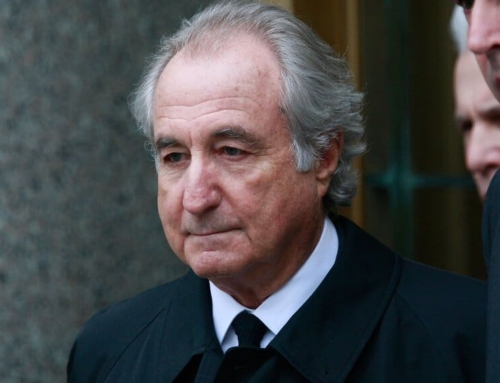
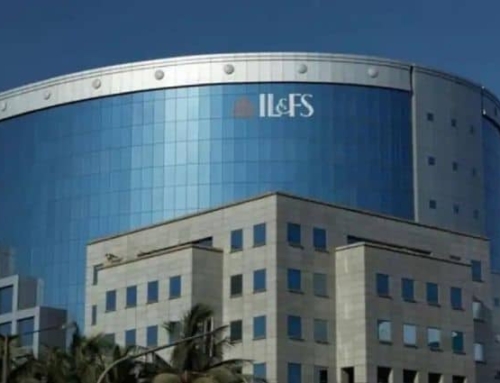
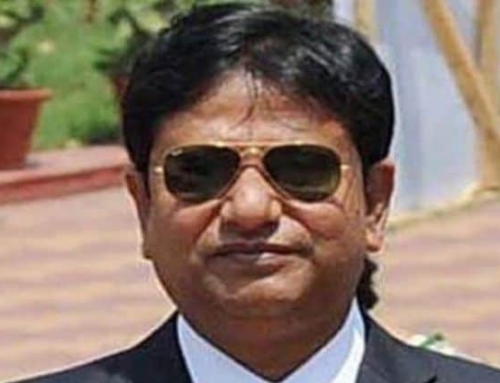
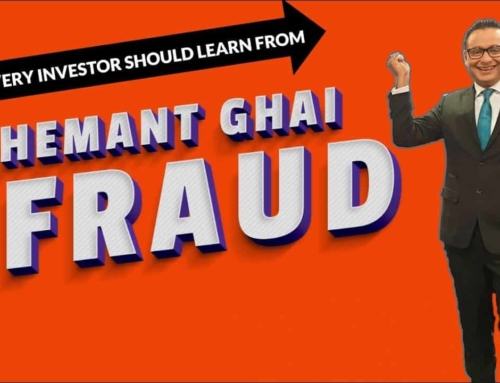
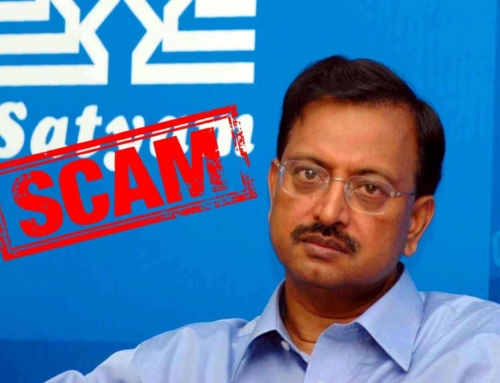

Leave A Comment